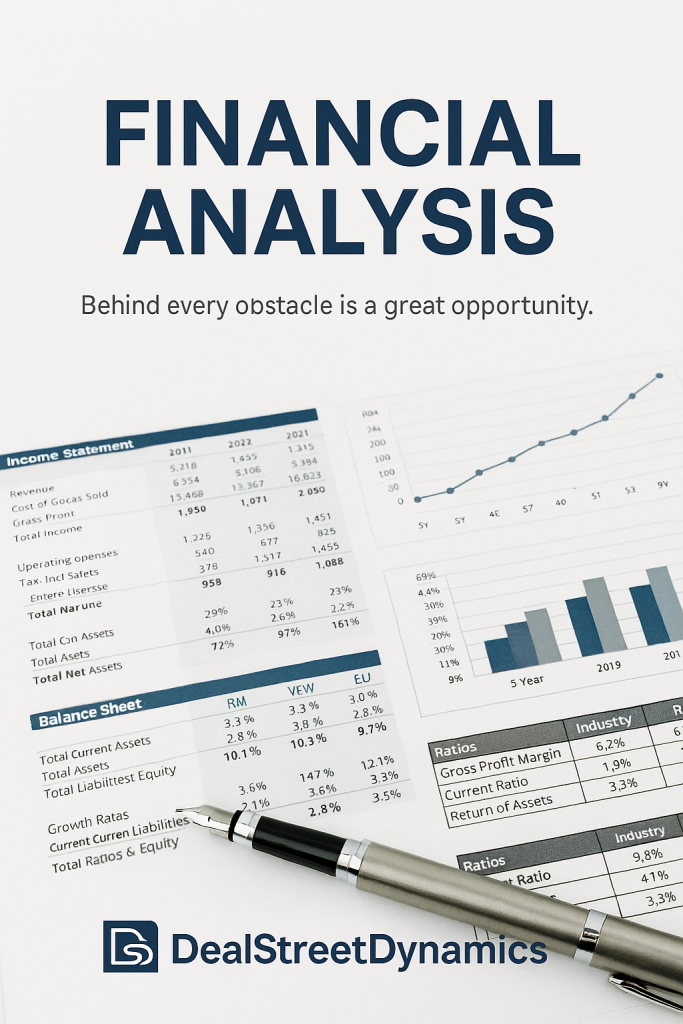
📊 DealStreetDynamics Financial Analysis Report
1. Historical Financials (3–5 Years)
Income Statement, Balance Sheet, and Cash Flow
Year-over-year growth rates
EBITDA and discretionary earnings normalization
Visuals: trend charts, margin breakdowns, revenue mix
2. Industry Benchmarking
Compare key ratios to Robert Morris Associates (RMA) Financial Statement Studies:
Gross margin, net margin, current ratio, debt-to-equity, inventory turnover
Highlight overperformance and underperformance zones
Include percentile rankings and industry averages
3. Valuation Summary (Top 4 Methods)
| Method | Description | Value Range |
|---|---|---|
| Asset-Based | Net tangible assets adjusted for market value | $X–$Y |
| Income-Based (DCF) | Discounted future cash flows | $X–$Y |
| Market-Based | Comparable sales multiples (SDE, EBITDA) | $X–$Y |
| Rule of Thumb | Industry-specific heuristics | $X–$Y |